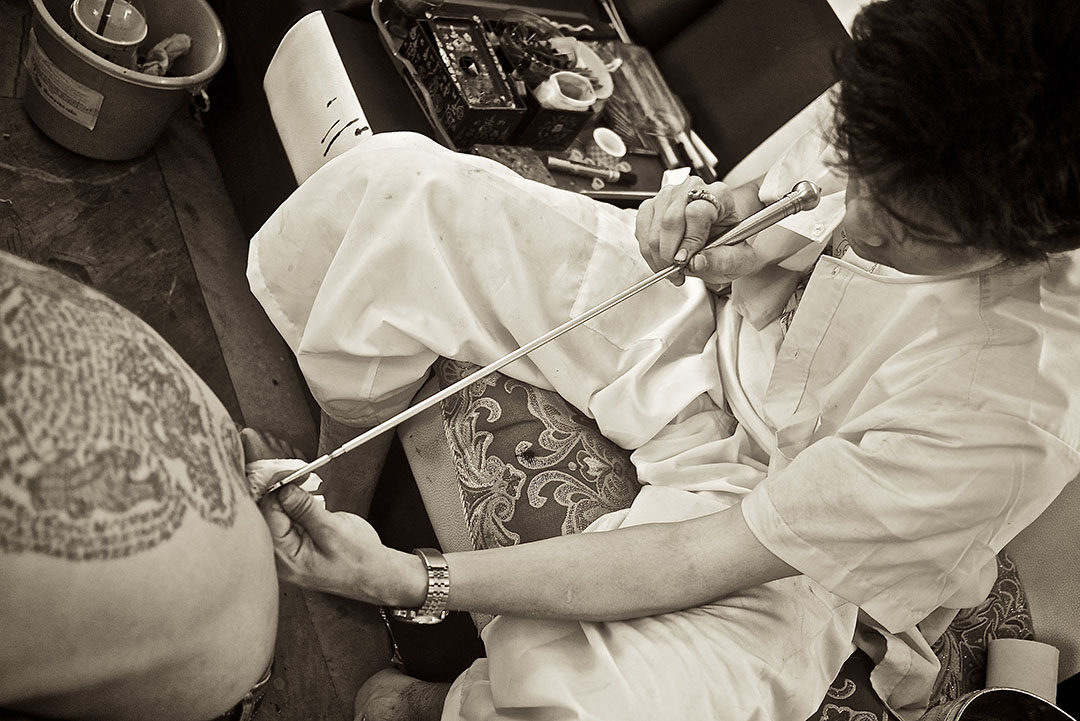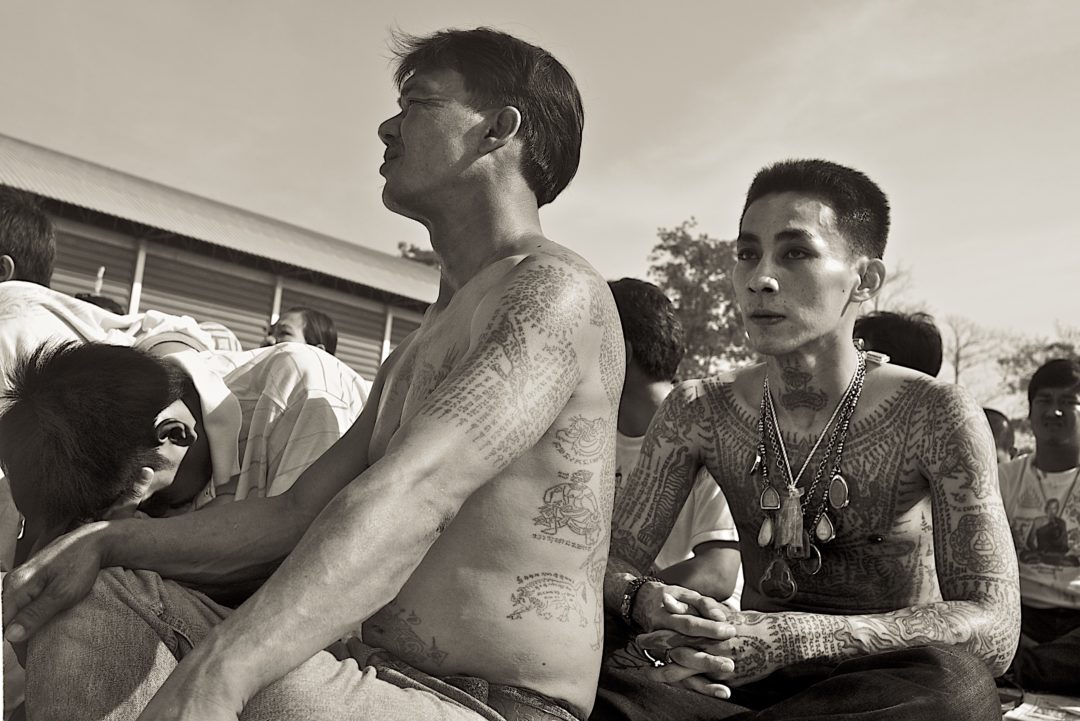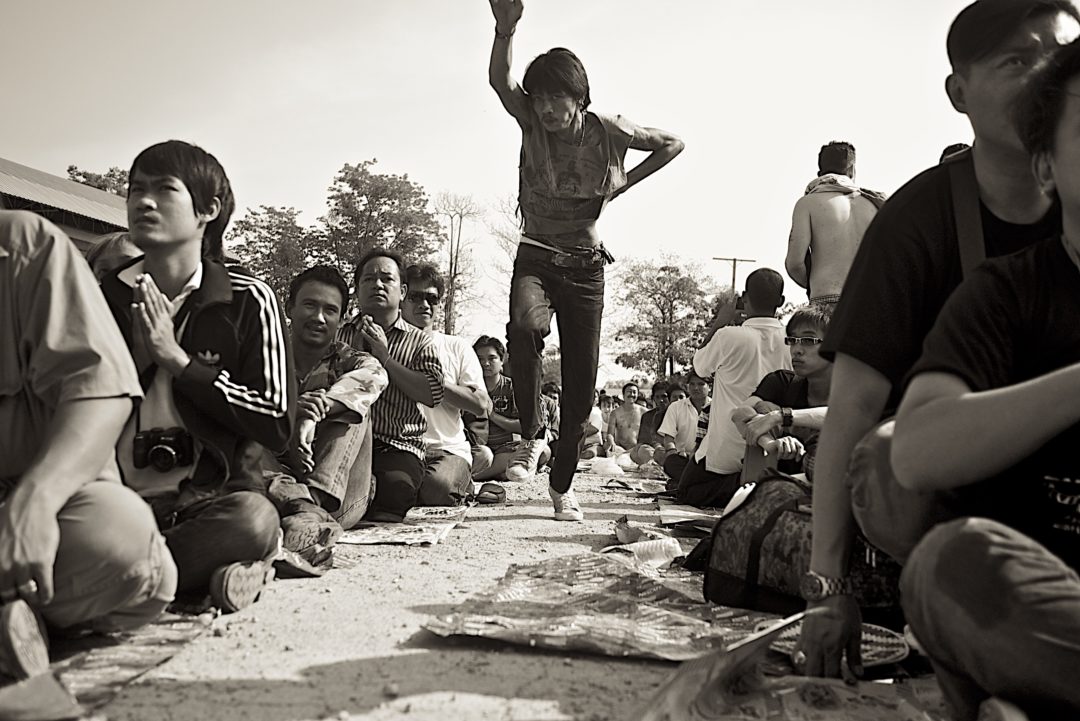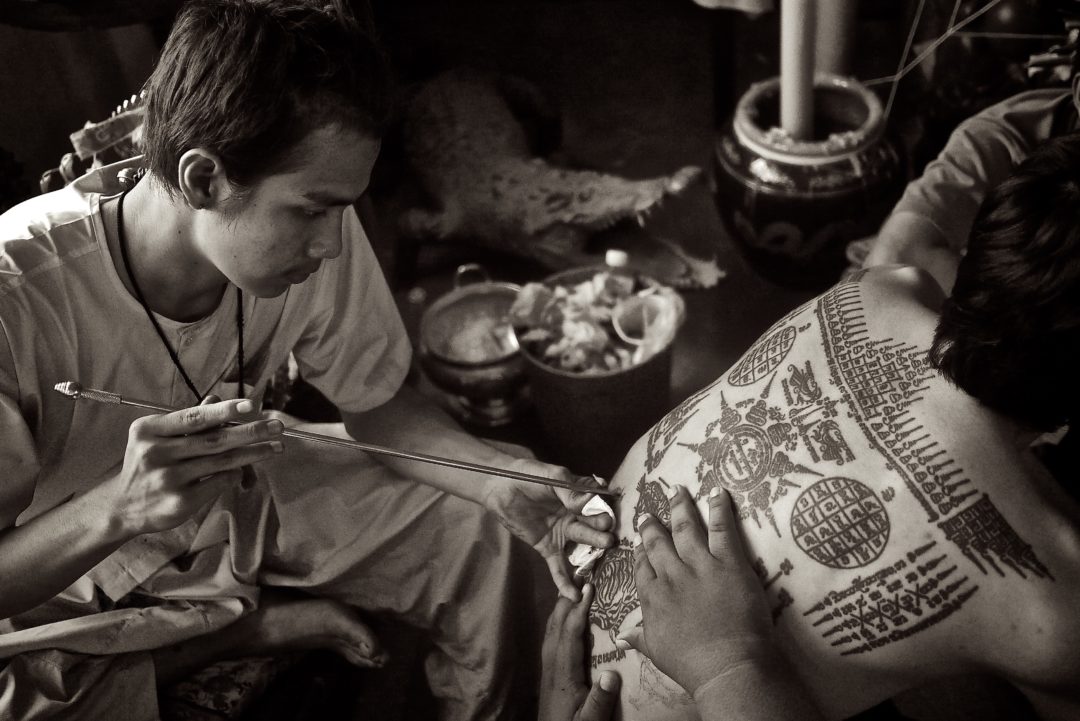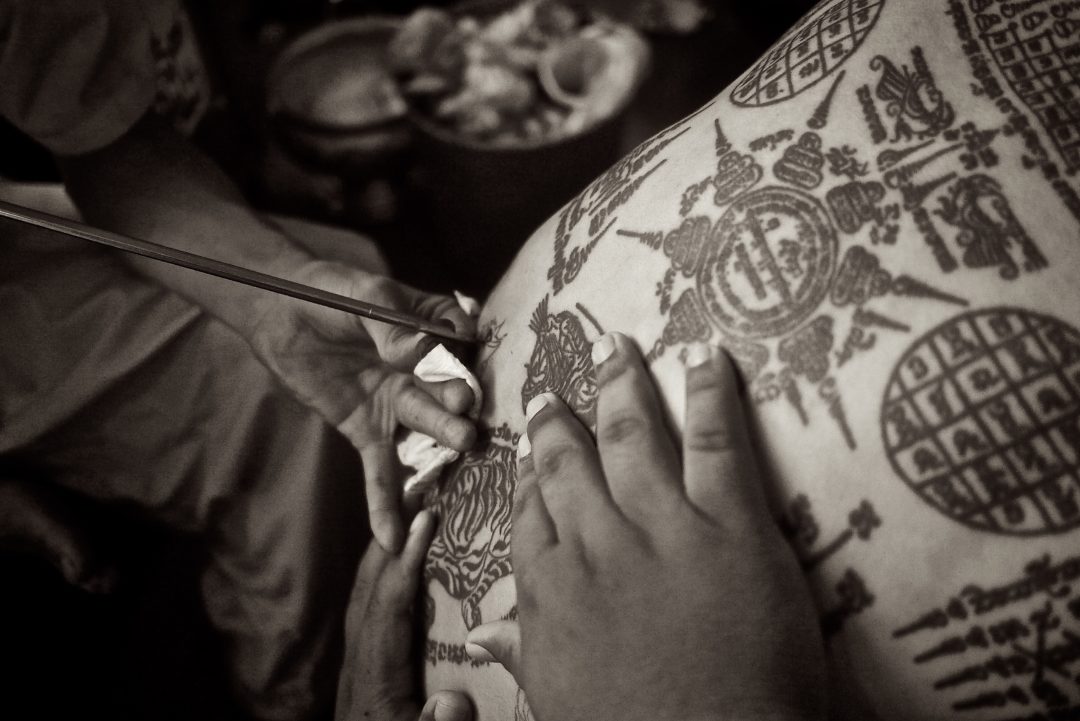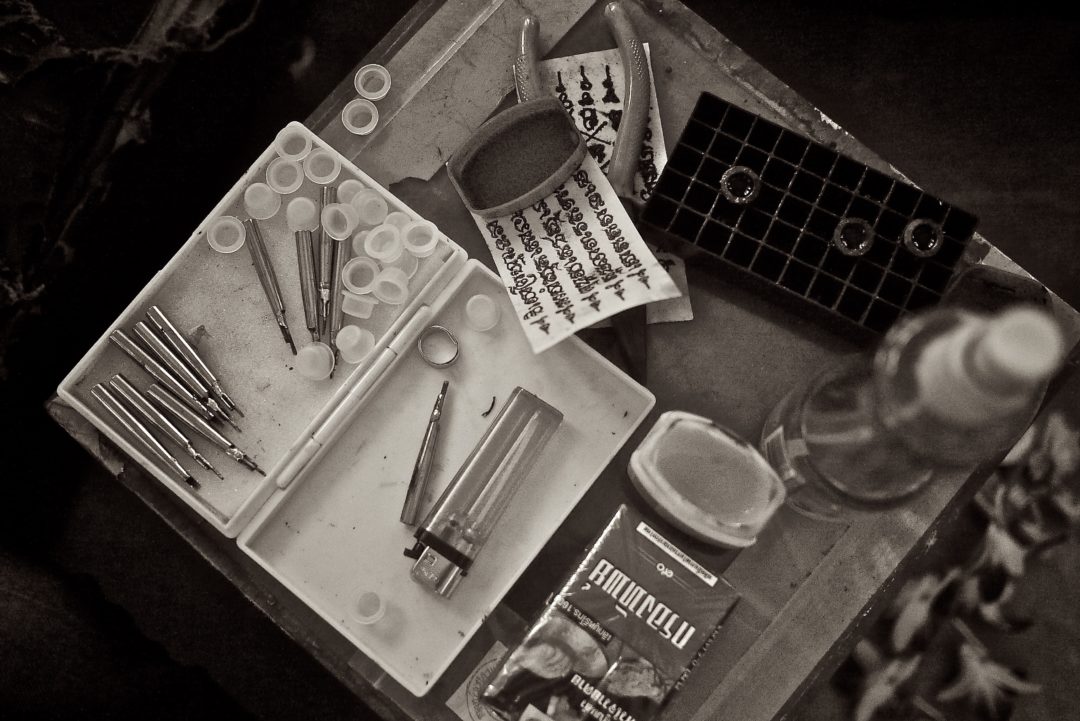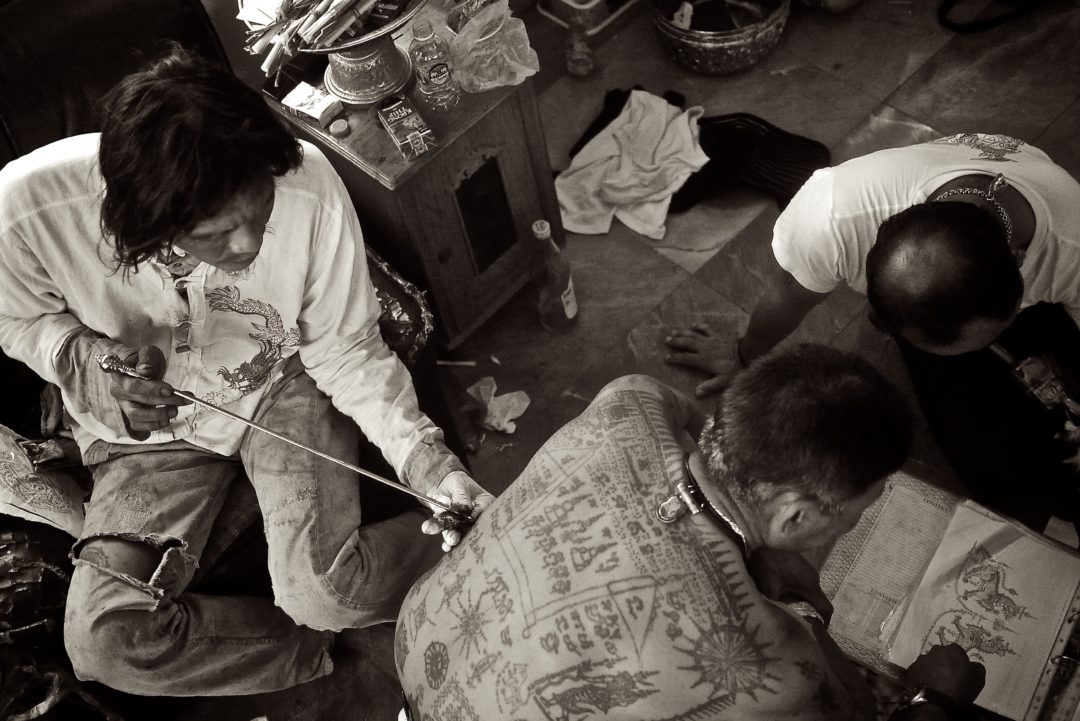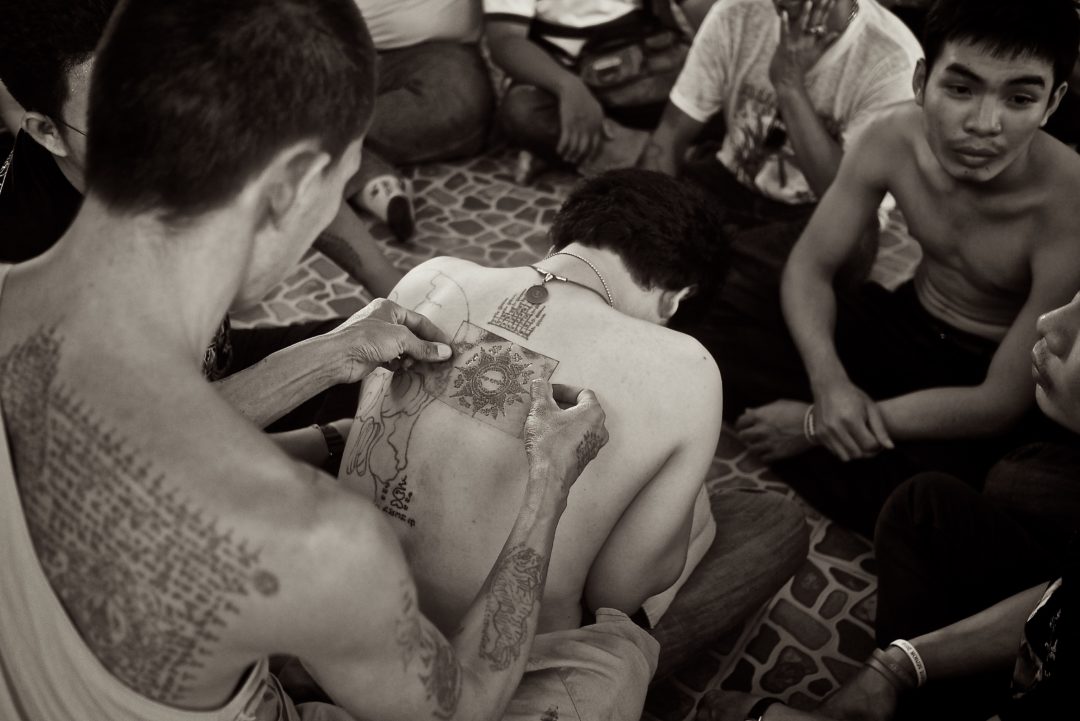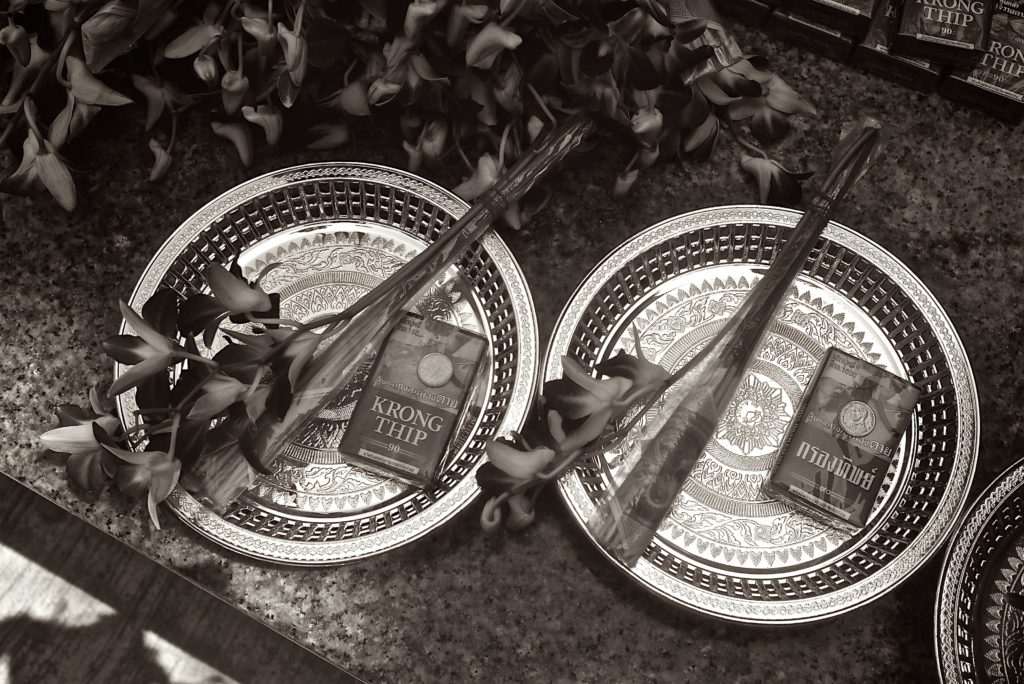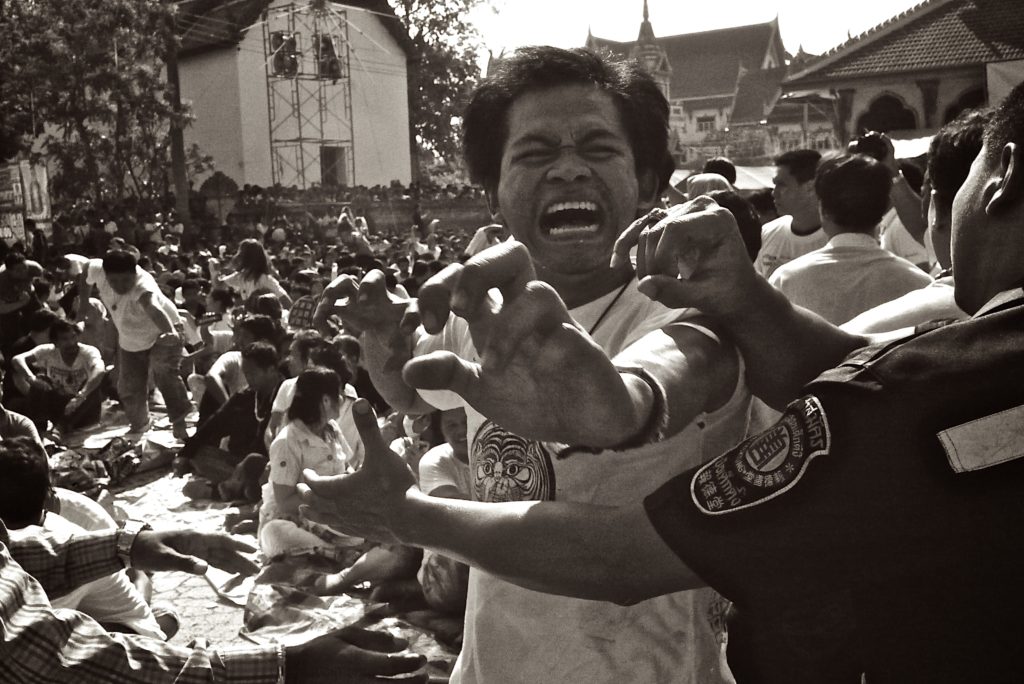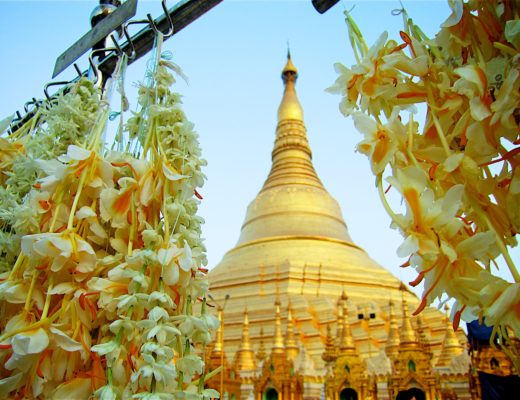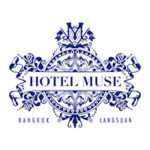Not a single drop of blood appears on the skin. Yet the man’s facial expression shows how painful each jab of the long spike is. It leaves its mark deep and forever. Once the tattoo master is done murmuring some magical words over the freshly made pattern, the tattoo is filled with power.
15 minutes of pain
Like in most of Thai Buddhist Wats, the atmosphere in Wat Ban Phra, a mid-sized temple located 50km east of Bangkok, is full of contradictions – yes, it’s filled with mysticism and calm but at the same time the whole place resembles a village market place, a circus fair. Take the standard temple donation set for example – it costs 50 baht and consists of fresh flowers, a candle and…a pack of the cheapest local cigarettes. A moment after this eclectic set is donated to the monks, it is returned to the vendor to help collect further funds needed for Wat Bang Phra’s upkeep.
In front of one of the temple’s buildings, a line of people eager to have their bodies tattooed forms. Those who have waited their turn and had already gotten inside, can admire the artifacts assembled within the chambers – tigers claws, teeth and skins along with sacred figures and dozens of traditional Thai Buddhist amulets, all covered with a thick layer of dust.
One floor up, in a sunlit room, the tattooing takes place. The ambiance here is much more peaceful and contemplative. Sitting on armchairs and benches are monks and their assistants, ready to do their duty. The people scattered around on the floor are waiting to get their tattoos. Some are still browsing through makeshift catalogues of various patterns and symbols, most however are watching every move of the monks’ hands as they artfully tap and jab across the bodies of willing subjects.
The tattoo’s Thai name – Sak Yant – reflects the tattooing technique. Sak means “to tap”, Yant stands for yantra, a Sanskrit word for a graphical representation of a divine element, the way a mantra represents it with sounds. The tattoo is made using a long bamboo (Mai Sak) or metal (Khem Sak) spike. First the blade is dipped in ink, its contents clandestine, said to contain palm oil, soot and…snake venom. Moments later, the monks’ dexterous hands begin piercing the skin in a repetitive motion. Dots of ink form lines, lines turn into sophisticated, and supposedly magical patterns. The monks face is a display of great concentration; the tattoo recipient is clearly in pain. The spike pierces the skin, leaving the ink deep underneath. One false move and the tattoo’s shape will be flawed. To prevent this, the man receiving the tattoo is held down by a couple of men, unable to move.
It takes just 15 minutes yet the results are stunningly beautiful. It’s hard to believe that such intricate and precise designs are able to appear in such a short amount of time. There is no other way as hundreds of others patiently wait their turn, discussing the most suitable choice of tattoo with the monks. Each person is unique and depending on their profession, the constellation of planets on the day they were born, will receive a different tattoo.
The same techniques are used in dozens of tattoo shops across Thailand. However only a tattoo made or blessed by a monk is said to be filled with mystical powers that bring good luck and protection from evil. Intangibles such as demons and spirits and the more tangible ones like the strike of a knife or a bullet. Many Thai people are superstitious, fond of legends, ghosts and spirits and seeking protection in a variety of amulets. It’s no surprise that Sak Yant gained such popularity here.
Not a decoration
Moments ago the atmosphere on the temple’s square was rather festive. Gathered on straw mats, under the scorching sun are whole families; fan and straw hats vendors are in great demand and colourful sodas and ice cream assist in managing the heat and humidity. That’s until a group of monks enter the podium in front of the crowd and suddenly the mood changes without warning. Wai Kru, a ceremony to pay respect to monks and teachers has begun.
The crowd repeats the words of a prayer delivered through loudspeakers. A mantra whispered by a thousand voices sounds intense and powerful. On my left, a bare-chested man sways to the rhythm. His eyes are shut, his hands clasped in prayer, sweat drips down his tattoo-covered neck. Nine vertical lines form a pyramid of Gao Yord, a representation of the nine summits of the sacred mountain Meru, the centre of the Hindu universe. Beneath each line, three ovals on top of one another resemble a meditating Buddha. This is not the first time that Thai Buddhism blends with Hinduism – a religion that was brought here with the expansion of the Khmer empire. Hanuman, Ganesh and other Hindu deities can be spotted in many Thai Buddhist wats and shrines, while numerous Royal rites and symbols are rooted in Brahmanism traditions. Even the world famous capital of the ancient kingdom of Siam – Ayutthaya – was named after the Indian city of Ayodhaya, Rama’s birthplace.
I scan the crowd and spot a massive form of a man a few meters in front of me. His entire back is covered with tattoos. There’s the Gao Yord on his neck, a very popular symbol that can be easily spotted in any number of Bangkok taxis. Below it, two tigers climb up the man’s back – Yant Suea symbolizes power and authority. An impressive lion occupies the lower part of the man’s back – Singh Yant is a preferable choice for military personnel, policemen and politicians. I manage to catch a glimpse of the man’s side, covered by Yant Tao Reuan – a turtle, said to grant good health and a long life.
It doesn’t end there. Each square centimetre of the man’s skin is covered with tattoos. Next to wild beasts and mythical creatures are magical symbols, symmetrical shapes, and words written with ancient scripture. Some of these shapes are 3000 years old; others are contemporary, designed very recently by Buddhist monks. Or rather – discovered by them. Hinduism followers believe that yantras are a part of cosmic harmony and exist from the beginnings of time, waiting to be uncovered.
Tiger Tamer
Wat Bang Phra’s prior, Luang Phor Pern is one of the most revered yantra’s “discoverers”. Numerous pictures and photographs of the famous monk can be seen on the temple’s walls. Born in 1923 in a village known to be a dangerous place disturbed by various hoodlums, the young Luang Phor Pern found refuge in the local temple where he got acquainted with Buddhist scriptures at a very young age and learned Sak Yant techniques from the great masters. He was ordained as a monk at the age of 26 and set out for a journey across Thailand. It was during a meditation session in the wilderness of Thailand’s north, that a legendary encounter with a tiger took place. Faced with the beast during one of his forest walks, Luang Phor Pern chose not to run for shelter, but sat down on the ground and begun chanting a mantra. Taken aback, the animal first listened to the prayer and then run off into the woods. Luang Phor Pern became known as the Tiger Tamer and spent the remaining 30 years of his life in Wat Bang Phra, where he designed amulets and tattoos and passed on his knowledge and skills to the next generation. Today, many years after his death, he can still be met at the temple – a glass sarcophagus with his mummified body awaits the public in one of the temple’s chambers.
Amulets designed by the prior reach astounding prices amongst collectors and his cult keeps growing. However this is not the case with the tattoos, as these are believed to loose some of their power over time. This is why the annual Wai Kru ceremony takes place. The crowds that visit the temple each year come here for two reasons – to pay tribute to the prior and other monks and to replenish the powers hidden within their tattoos.
Collective trans
The crowd gathered on the temple’s square are so consumed in prayer that no one seems to notice one man, who suddenly leaps to his feet. Madness fills his eyes; his face twisted in a grimace. A yelp escapes his throat, and all heads turn in his direction. Suddenly the man jerks forward and runs at full speed towards the altar, where strong arms of voluntary workers await him. They grab him, pin him down and begin rubbing his ears. This seems to calm him down and the man returns to his place among the crowd.
It doesn’t take long before another man becomes possessed. This time the growling sound come from below. I see a man crawling in the dirt; his moves are that of a furious alligator, similar to the one that a tattoo artist left on his calf. Then again, the voluntary workers grab him, rub his ears and send him back sedated with calm to the crowd.
These violent scenes last for nearly an hour. The possessed men and women come in waves, when one falls into a trance, others follow and the whole place fills with complete chaos. People trample over each other, and fall with the volunteers guarding the altar; it’s like a good old punk rock concert but with a Buddhist mantra for a soundtrack.
Then comes the climax. Suddenly, at the sound of a command from one of the monks that I fail to understand, the whole crowd rises to their feet and begins pushing towards the altar. No one can resist the few thousand strong masses of people, young and old, men and women are carried forward in a giant human wave. Minutes later I’m relieved to be released from the crowd right next to a place where medics carry unconscious and sometimes wounded people to the ambulances. Could it have been that their tattoos failed to protect them?
The traditions of Sak Yant and Wai Kru ceremony at Wat Bang Phra are filled with mystery. Nobody knows how ancient the history of the temple is or how it became the centre of a Buddhist tattoo tradition in Thailand. The truth about Luang Phor Pern cannot be verified. No one was able or wanted to tell me the secret formula of the Sak Yant ink or why rubbing the ears of the possessed calms those in a trance. Looking at pictures and videos from the ceremony, one might doubt the authenticity of the trance. Maybe it’s just some feeble minded individuals who use this opportunity to show off amongst others like them? After all, so many things in Thailand are fake and just for show.
True, you can doubt all you want when reading about the charging crowd, or about men acting like tigers, elephants and crocodiles in frenzy. But once you’re in their way, the doubt is no more.
